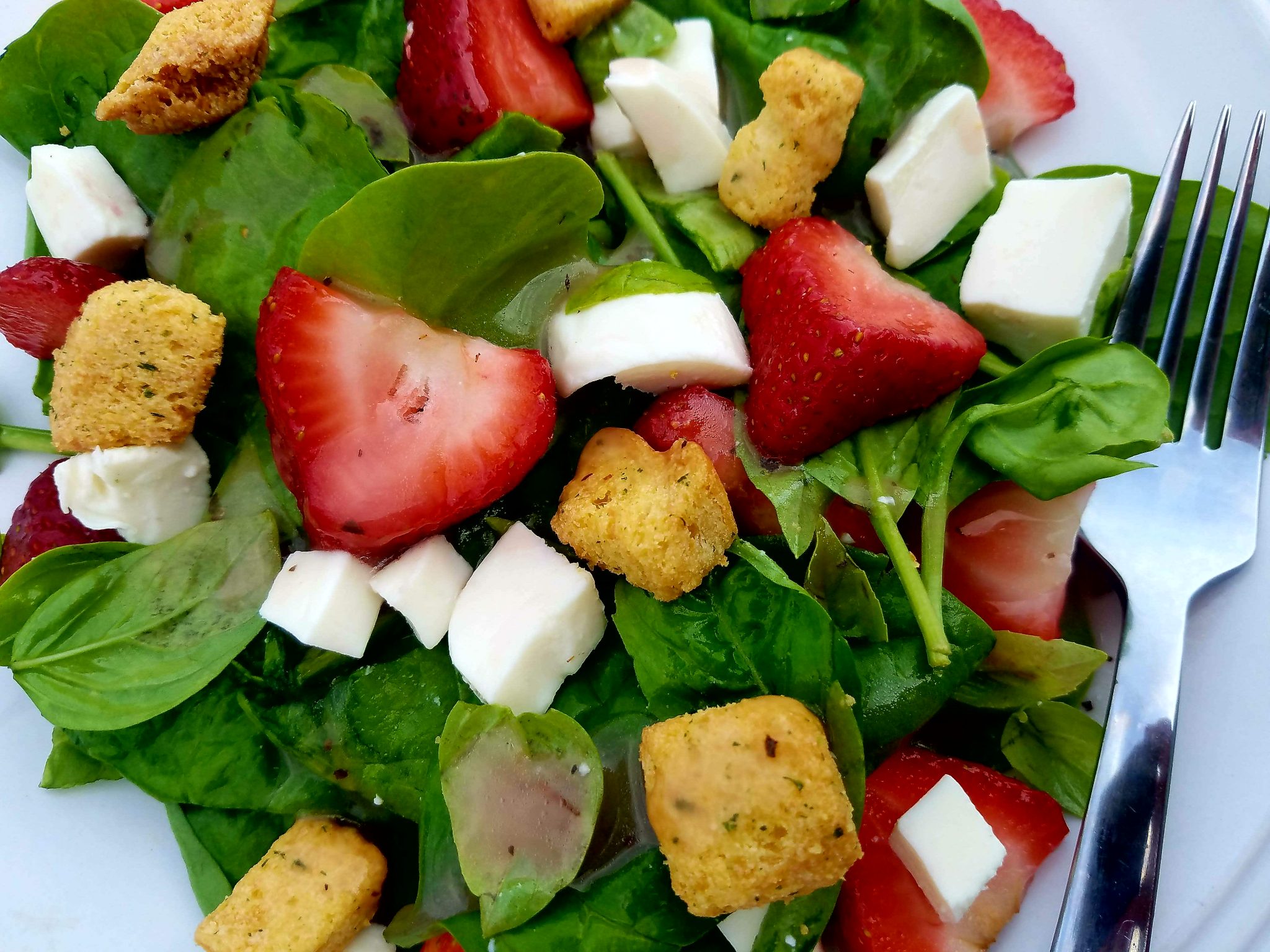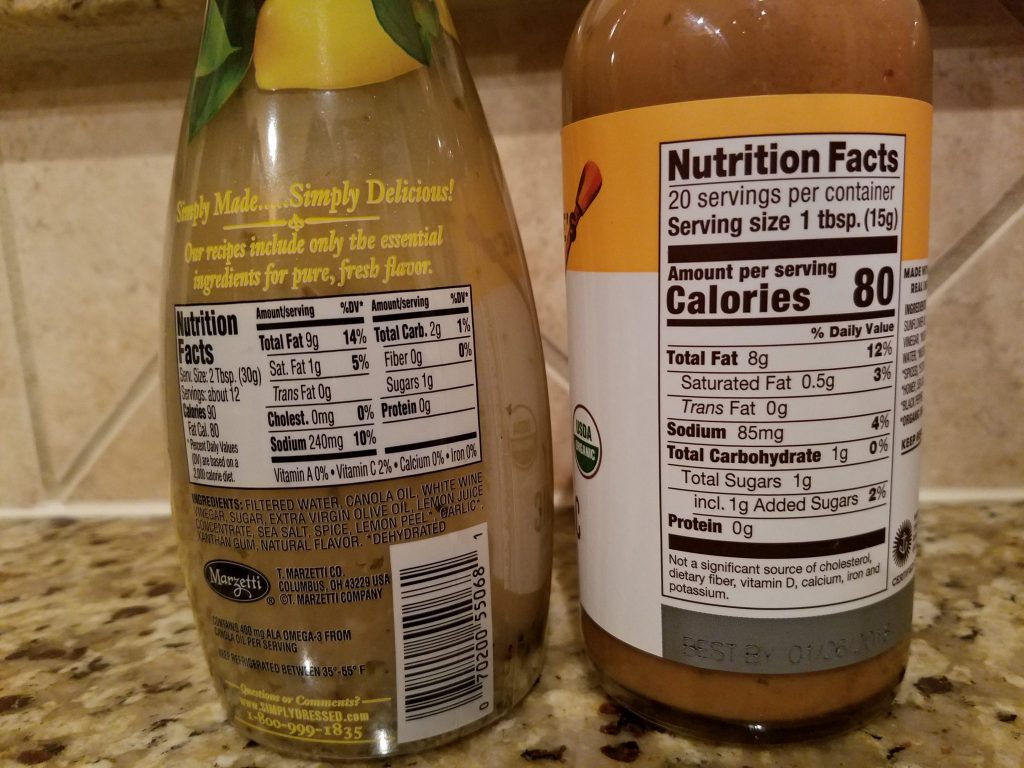Frustrated with the small print or misleading information on Nutrition Facts Panels?
Be sure to check out the new labels that have been approved by the Food and Drug Administration and are already hitting the stores.
You can see some of the important changes on the salad dressing labels above. The old label is on the left, the new label is on the right.
Health conscious consumers will be happy to see some key updates such as:
1) Calories are in larger print. Certain packages like 20 oz. bottles of soda and King Size bags of chips will be required to list calories per serving AND calories per package if the entire package may typically be consumed in one sitting. No more misleading information or math calculations required.
2) Sugars will now distinguish added and naturally occuring sugars. For example, the product on the right above has 1 gram of sugar– 1 of which is added sugar. It is helpful to try to limit added sugars because they don’t come packaged with other beneficial vitamins, minerals, and fibers like natural sugars often do.
3) Sugars will now list a % Daily Value. This means that consumers will clearly see that a bottle of soda may contain an entire day’s worth of sugar (100% Daily Value). Remember than anything above 20% Daily Value is considered “high” and less than 5% Daily Value is considered “low”.
4) Mandatory reported vitamins and minerals will change. The old labeling system required manufacturers to report the content of vitamin A, vitamin C, calcium, and iron. They may choose to list other nutrients if they desire.
The new system requires manufacturers to list vitamin D, potassium, calcium, and iron since those nutrients tend to be low in the average American diet.
So what hasn’t changed? Manufacturers are still given some freedom about what they list as a serving size. For example the dressing on the left lists 2 Tablespoons as a serving; the dressing on the right lists 1 Tablespoon.
Be sure to check the serving size first when comparing products or estimating how much you are actually eating.

